
 |
Tea Clipper |
 |
| from TeaAntiques.com | ||
| Edition Sixty |
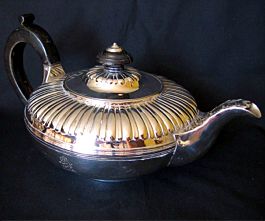
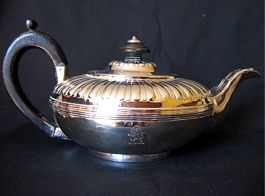
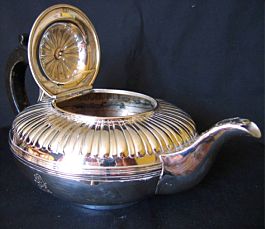
This beautiful George IV compressed circler shaped sterling silver teapot, was made in London by Emes & Barnard in 1823. The main body of the teapot is decorated round the top half with gadrooned decoration, this is then repeated round the lid of the teapot. There is delightful applied acanthus leaf decoration to the top face of the pouring spout and also to the two handle sockets - a very nice decorative feature.
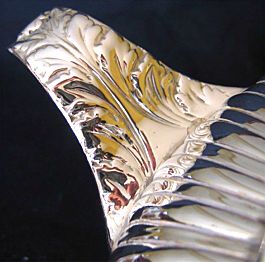
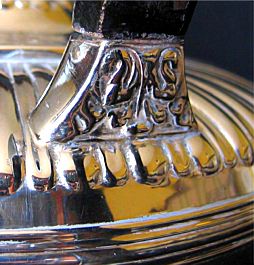
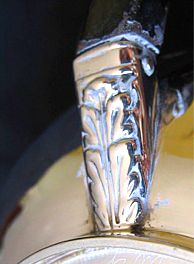
The engraved lion on one side of the teapot, would have been the family crest of the original owners of this fine teapot.
The teapot has a full and very crisp set of hallmarks on its base and a short set of marks on the inside of the hinged lid. There is also a hallmark on the small wing nut that secures the finial to the lid.
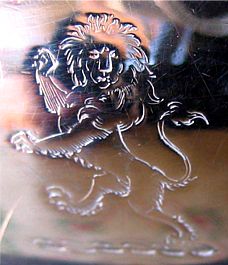
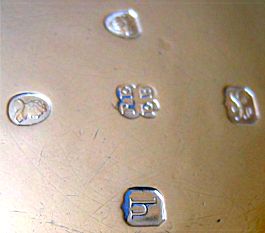
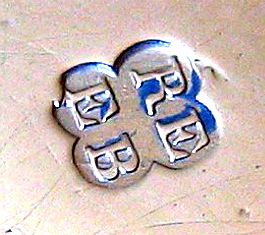
This is a very fine and functional George IV teapot that could be used and would grace any afternoon tea table.
More details of this item and other tea related antiques can be found by visiting my web site at www.TeaAntiques.com.
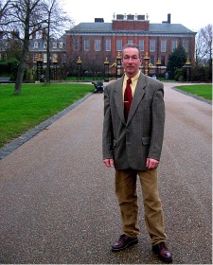 If
you should find yourself in London this winter, what better place can I suggest
for a bit of light relief from the cold winter days than a visit to Kensington Palace,
Kensington. Situated not far from the famous Harrods store, it can be a diversion
from the crowds of people out for some early Christmas shopping!
If
you should find yourself in London this winter, what better place can I suggest
for a bit of light relief from the cold winter days than a visit to Kensington Palace,
Kensington. Situated not far from the famous Harrods store, it can be a diversion
from the crowds of people out for some early Christmas shopping!
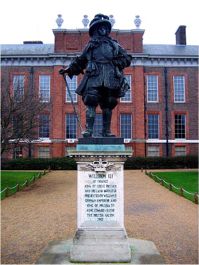 This
early Royal Palace is sited on the West end of Hyde Park and became a Royal residence
in 1689 when it was acquired by King William III, whose statue dominates the Palace
South front, and Queen Mary to escape the heavy air and smog of central London.
Until this time the house, as it was, belonged to Daniel Finch, Earl of Nottingham.
He moved out to a country estate and William and Mary moved in and began the alterations
to turn it into a Palace. The alterations were carried out by Sir Christopher Wren
who was Surveyor of the King's works. As William and Mary were so anxious to move
into their new Palace, instead of rebuilding completely, they designed the Palace
by adding on blocks and wings.
This
early Royal Palace is sited on the West end of Hyde Park and became a Royal residence
in 1689 when it was acquired by King William III, whose statue dominates the Palace
South front, and Queen Mary to escape the heavy air and smog of central London.
Until this time the house, as it was, belonged to Daniel Finch, Earl of Nottingham.
He moved out to a country estate and William and Mary moved in and began the alterations
to turn it into a Palace. The alterations were carried out by Sir Christopher Wren
who was Surveyor of the King's works. As William and Mary were so anxious to move
into their new Palace, instead of rebuilding completely, they designed the Palace
by adding on blocks and wings.
Subsequent Monarchs including Queen Anne, George I and George II have also made their changes to the Palace before it was given up as a main Royal Palace by George III who moved into Buckingham House, which is now Buckingham Palace. It is the many changes by various Monarchs that gives Kensington Palace a rather disjointed feel when you go round inside. However, there are some very fine State Rooms to be enjoyed from the time of these early Monarchs.
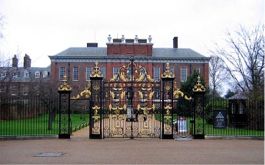 My
approach to Kensington Palace was from the South and a drive through part of Hyde
Park leads to a huge pair of wrought iron gates with gilded details. These gates
stand guarding the red brick Palace, which on this elevation has some slender white
framed windows to the main block of the Palace which houses the King's Gallery,
a beautiful picture gallery designed for George I by William Kent. In this great
long room are hung some of the pictures from the time of George I and have their
original frames designed by William Kent, set off against a rich red paper complemented
by red damask curtains. This room also contains an unusual wind direction indicator
set above the central fireplace, this made for William III by Robert Morden in 1694.
My
approach to Kensington Palace was from the South and a drive through part of Hyde
Park leads to a huge pair of wrought iron gates with gilded details. These gates
stand guarding the red brick Palace, which on this elevation has some slender white
framed windows to the main block of the Palace which houses the King's Gallery,
a beautiful picture gallery designed for George I by William Kent. In this great
long room are hung some of the pictures from the time of George I and have their
original frames designed by William Kent, set off against a rich red paper complemented
by red damask curtains. This room also contains an unusual wind direction indicator
set above the central fireplace, this made for William III by Robert Morden in 1694.
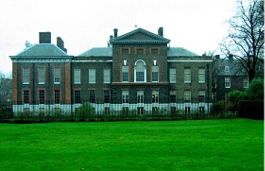
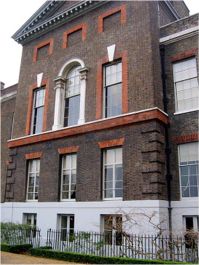 The
East front of the Palace shows much of the additions made in the time of George
I between 1718 - 1727, including the pedimented central block with Italianate window.
These were some of the last alterations to the outside of the Palace. Set back and
to the right of this George I block, is the older block which contained the Queen's
gallery, this dating from 1690-1692 and made for Queen Mary. King William had his
own apartments on the South front of the Palace.
The
East front of the Palace shows much of the additions made in the time of George
I between 1718 - 1727, including the pedimented central block with Italianate window.
These were some of the last alterations to the outside of the Palace. Set back and
to the right of this George I block, is the older block which contained the Queen's
gallery, this dating from 1690-1692 and made for Queen Mary. King William had his
own apartments on the South front of the Palace.
In front of the Georgian pedimented wing of the Palace is a garden which use to be a square lawn garden, with geometric flower beds, the design of the Duke of Teck who was then lodged in the Palace. This little garden was used for croquet, bowls and for taking tea on by the Duke and Duchess.
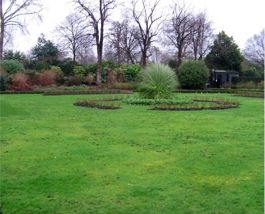
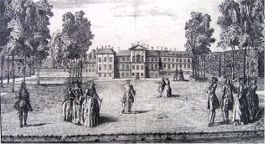
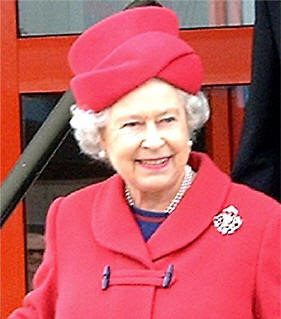 Entering
the Palace, the first thing that the visitor sees are some exhibitions on court
dress through the ages, how it evolved from the eighteenth century to the 1920's
and 30's. Exhibits show the work involved in tailoring and dress making for Court
clothes and the strict presentation ritual of Debutantes at the Debutante's balls,
presenting freshly 'out' young ladies to the Monarch, in a hope that it would launch
them into the best society. Another exhibition is given over to some of the dresses
worn by the current Monarch, Queen Elizabeth II, during her long reign. Many of
the dresses on display are by such world renowned fashion designers such as William
Hartnell and Hardy Amies.
Entering
the Palace, the first thing that the visitor sees are some exhibitions on court
dress through the ages, how it evolved from the eighteenth century to the 1920's
and 30's. Exhibits show the work involved in tailoring and dress making for Court
clothes and the strict presentation ritual of Debutantes at the Debutante's balls,
presenting freshly 'out' young ladies to the Monarch, in a hope that it would launch
them into the best society. Another exhibition is given over to some of the dresses
worn by the current Monarch, Queen Elizabeth II, during her long reign. Many of
the dresses on display are by such world renowned fashion designers such as William
Hartnell and Hardy Amies.
From the exhibitions, the first Royal apartment seen is Apartment 1a, this having last been the home to Princes Margaret and Lord Snowdon, granted to them by The Queen. Since the death of Princes Margaret, this apartment is awaiting being used for more displays etc, so currently appear a faceless set of almost empty rooms - which seems sad. However moving through these leads to the exhibition of the dresses from the late Princes Diana's collection, before continuing into the State Apartments.
The first magnificent room is the King's grand Staircase, designed by Sir Christopher Wren in 1689 for William and Mary. It was later altered by George I, these alterations included the beautiful and cleverly painted scenes on the walls of the entire Staircase, this the work of William Kent. This painting includes trompe l'oeil arched balconies with balustrades, through which members of George I's court peer over the rising staircase.
At the top of the Grand Staircase, visitors transverse the series of State rooms, these including the Presence Chamber, Privy Chamber, Cupola Room, Kings drawing Room, Council Chamber, Queen Victoria's Bedroom, Duchess of Kent's Dressing Room, The Kings Gallery and Queen Mary's apartments from the late seventeenth century. In their day, it would depend on your status and dress, as to how far you progressed into these State Apartments to see the King and Queen.
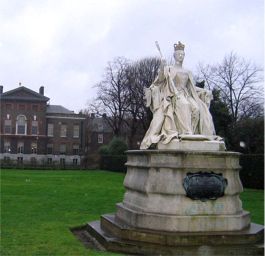 The
cube shaped Cupola Room is a spectacular room with high domed painted ceiling by
William Kent, 1722. This magnificent ceiling brings together elements of Roman architecture
and symbols of the Court of George I, including a large Star of the Order of the
Garter, in the centre of the dome. The walls have gilded Ionic pilasters and four
gilt chandeliers hang from the ceiling. In the centre of this room is a gigantic
four faced clock acquired by the mother of George III. This clock once contained
a musical box which played tunes by Handel, Corelli and Geminiani. It was in this
room, that the future Queen Victoria was Christened. Indeed, it was in Kensington
palace, that the young Princess Victoria learned that she was Queen upon the death
of her Uncle, William IV, in 1737. A statue of Queen Victoria looks out away from
the Palace on the lawns of the East Front.
The
cube shaped Cupola Room is a spectacular room with high domed painted ceiling by
William Kent, 1722. This magnificent ceiling brings together elements of Roman architecture
and symbols of the Court of George I, including a large Star of the Order of the
Garter, in the centre of the dome. The walls have gilded Ionic pilasters and four
gilt chandeliers hang from the ceiling. In the centre of this room is a gigantic
four faced clock acquired by the mother of George III. This clock once contained
a musical box which played tunes by Handel, Corelli and Geminiani. It was in this
room, that the future Queen Victoria was Christened. Indeed, it was in Kensington
palace, that the young Princess Victoria learned that she was Queen upon the death
of her Uncle, William IV, in 1737. A statue of Queen Victoria looks out away from
the Palace on the lawns of the East Front.
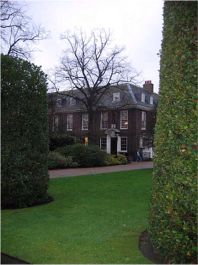 In
Queen Mary's Apartments there are two early Chinese blue and white teapots to be
seen, these dating from the late seventeenth century. These teapots along with other
pieces of blue and white Chinese porcelain can be seen in the Queen's Bedchamber.
Queen Mary was an avid collector of blue and white Chinese porcelain which would
be crowded onto every ledge and fireplace around her rooms.
In
Queen Mary's Apartments there are two early Chinese blue and white teapots to be
seen, these dating from the late seventeenth century. These teapots along with other
pieces of blue and white Chinese porcelain can be seen in the Queen's Bedchamber.
Queen Mary was an avid collector of blue and white Chinese porcelain which would
be crowded onto every ledge and fireplace around her rooms.
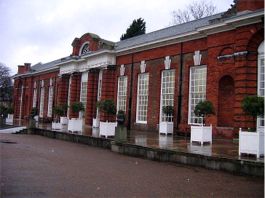 After
enjoying the walk through the State Apartments of the Palace, I set forth to the
Orangery, just a few minutes walk from the Place, now a fine restaurant and tea
room.
After
enjoying the walk through the State Apartments of the Palace, I set forth to the
Orangery, just a few minutes walk from the Place, now a fine restaurant and tea
room.
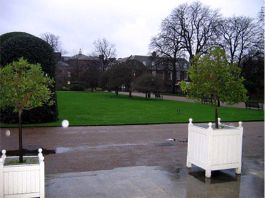 This
delightful red brick Orangery was built in 1704-5 and retains the original Portland
stone terrace where in the summer the Orange trees that had over wintered in the
Orangery would be placed for the summer months. This gracious building is attributed
to Nicolas Hawksmoor with later alterations by Sir John Vanbrugh. Inside, the restaurant
and tearoom is a wonderful place in which to enjoy a good afternoon tea. Visitors
are greeted by a large table groaning under the weight of a huge pile of fruit scones,
cakes, biscuits and gateau's.
This
delightful red brick Orangery was built in 1704-5 and retains the original Portland
stone terrace where in the summer the Orange trees that had over wintered in the
Orangery would be placed for the summer months. This gracious building is attributed
to Nicolas Hawksmoor with later alterations by Sir John Vanbrugh. Inside, the restaurant
and tearoom is a wonderful place in which to enjoy a good afternoon tea. Visitors
are greeted by a large table groaning under the weight of a huge pile of fruit scones,
cakes, biscuits and gateau's.
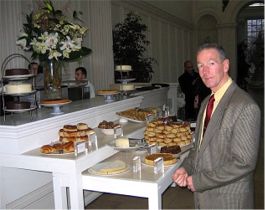
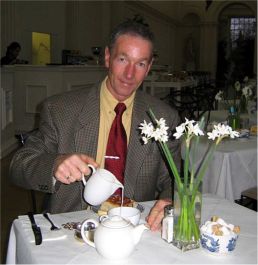
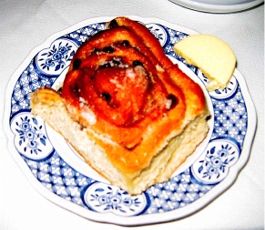
There looked to be a very tasty gateau appropriately named Orangery cake, obviously an Orange flavoured cake, but I went for a simple Chelsea bun (being in the district of Kensington and Chelsea) I thought this appropriate. This was very good, served warm with farmhouse butter. Chelsea buns are a rich fruited and spiced rolled bun that is delicious with afternoon tea. What more enjoyable place could there be in the area to enjoy a winters afternoon tea and to soak up some history and culture at Kensington Palace.
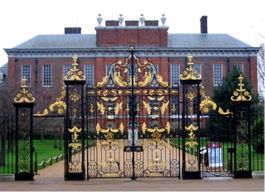
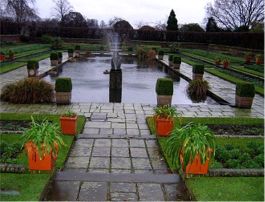
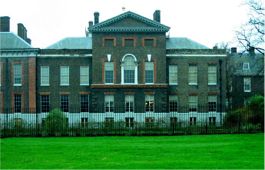
To review past newsletters, just follow this link:
Past newsletters.
To subscribe to this free newsletter -
Click here